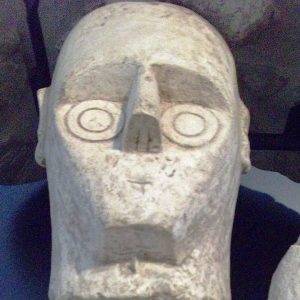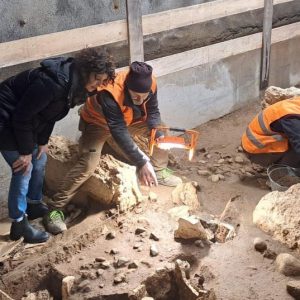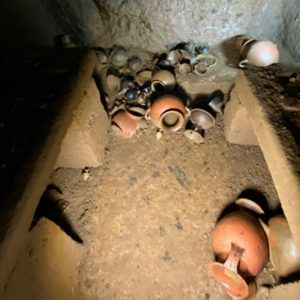As Italy seeks UNESCO World Heritage status for the Domus de Janas, many are asking: what exactly are these mysterious prehistoric tombs, carved into the Sardinian rock thousands of years ago?
The Domus de Janas, meaning “houses of the fairies” or “houses of witches” in Sardinian, are chamber tombs carved directly into rock faces. Dating from around 3400 to 2700 BC, they were built during the late Neolithic, Chalcolithic, and early Bronze Age by Sardinia’s pre-Nuragic peoples, including the San Ciriaco, Ozieri, and later cultures.
More than just burial sites, these tombs resemble miniature houses. Many consist of multiple rooms, with carved or painted ceilings that mimic domestic interiors, complete with beams and false doors. Some tombs feature symbolic artwork, such as spirals, zigzags, or stylised bull’s horns. These motifs are believed to hold magical or religious significance.
One of the largest necropolises is Anghelu Ruju, near Alghero, where 38 tombs have been uncovered. Other key sites include Montessu, near Villaperuccio, and Sant’Andrea Priu in Bonorva. Though found across much of Sardinia, they are notably absent from Gallura, where megalithic circles were more common for burials.
Inside, the dead were often painted with red ochre and buried with objects from daily life—jewellery, tools, and pottery. In some tombs, archaeologists have discovered carved false doors, usually placed at the back of the central chamber. These may have been symbolic portals to the afterlife and in some cases predate similar features in Ancient Egyptian tombs.
Pre-Nuragic culture examples
The Domus de Janas offer insight into the beliefs, artistry and burial customs of a civilisation that predated both the Nuragic culture and the arrival of the Phoenicians and Romans. Their careful construction and symbolic decoration suggest a society with complex spiritual practices and a strong connection to the land.
Italy first sought inclusion on the World Heritage List for the Domus de Janus in 2021. The Italian representative is pushing the case this year.





